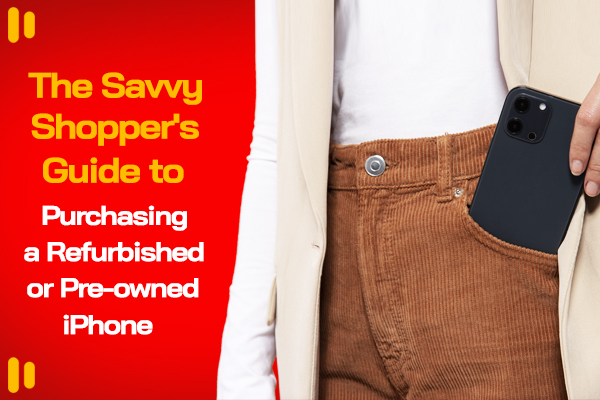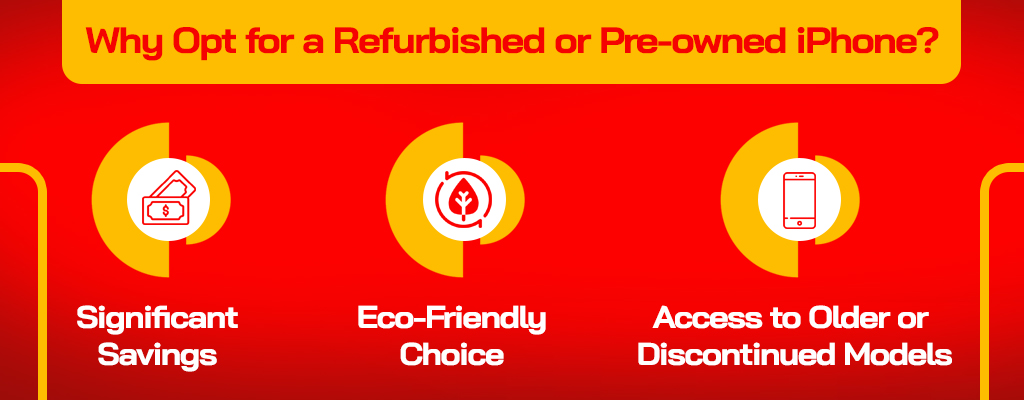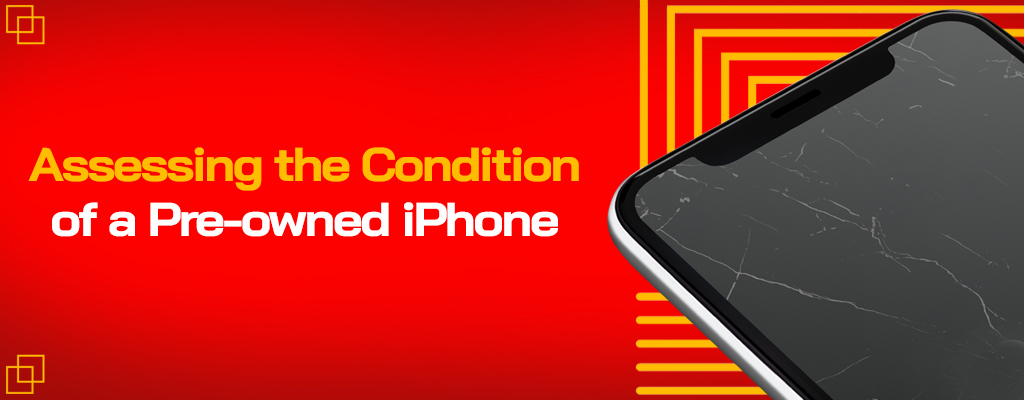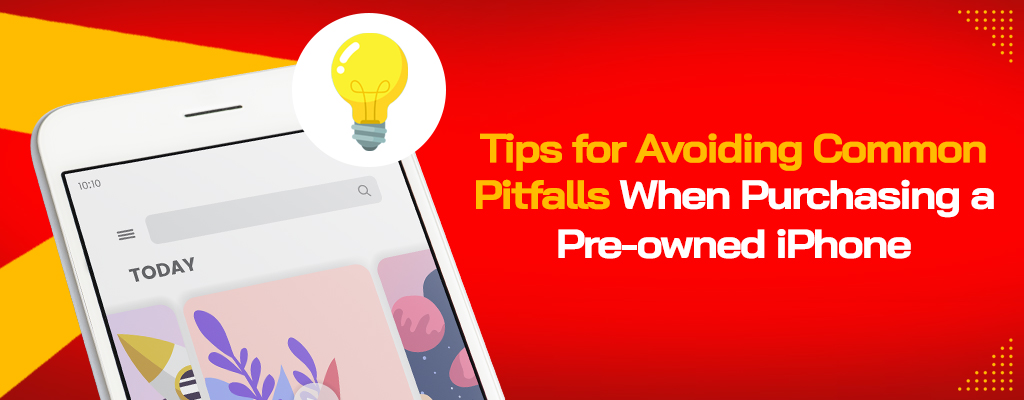The Savvy Shopper's Guide to Purchasing a Refurbished or Pre-owned iPhone
This comprehensive guide will equip you with all the knowledge you need to confidently buy a refurbished or pre-owned iPhone.
Updated: November 19th, 2023

Buying a Refurbished or Used iPhone
Acquiring a brand-new iPhone can be quite costly, but opting for a refurbished or pre-owned device can save you money and contribute to a greener environment. Nonetheless, purchasing a used or refurbished iPhone entails certain risks, so it’s crucial to know what to look for and how to safeguard yourself.
Why Opt for a Refurbished or Pre-owned iPhone?
If you’re in the market for an iPhone, there are several routes you can take. While you could always choose a sleek, brand-new device, that typically comes with a hefty price tag. Alternatively, you might consider a refurbished or pre-owned iPhone. Here are some compelling reasons why:
- Significant Savings
The primary motivation for purchasing a refurbished or pre-owned iPhone is the cost advantage. Apple’s newest iPhone models can run over $1,400, a substantial investment. If cutting-edge features aren’t a priority for you, a refurbished or pre-owned iPhone presents a more wallet-friendly option. - Eco-Friendly Choice
Choosing a used or refurbished iPhone not only saves you money but also benefits the environment. By opting for a pre-owned device, you’re decreasing the demand for new products, thereby reducing the need for raw materials and energy required for their production. This contributes to a smaller carbon footprint and supports a sustainable future. Additionally, you’re minimizing electronic waste that ultimately ends up in landfills – a pressing environmental concern. - Access to Older or Discontinued Models
One of the perks of refurbished or pre-owned iPhones is the availability of older or discontinued models that may no longer be offered by Apple. With Apple releasing new iPhone models annually, finding older versions can be challenging.
Refurbished or pre-owned devices provide a means to obtain these classic models. This can be particularly useful if you’re fond of the design or functionality of an older iPhone or if you possess accessories or software compatible exclusively with those earlier models.
Where to Purchase a Refurbished or Pre-owned iPhone
Now that you’re aware of the advantages of buying a used or refurbished iPhone, let’s explore where you can find one.
Online Marketplaces and Auction Sites
Popular platforms for buying used or refurbished iPhones include online marketplaces and auction sites such as eBay, Amazon, and Backmarket. These websites offer an extensive range of iPhones from various sellers at differing price points.
Pros:
- Wide array of devices available
- Often more affordable compared to other retailers
- Purchase protections guarantees
Cons:
- Stock photos of many devices
- Confusing grading conditions
- May not always include accessories
Specialized Refurbished and Pre-owned Device Retailers
Did you know that there are specialized retailers offering used or refurbished iPhones?
Companies like Gazelle and Decluttr may not have the most extensive selection, but they compensate with guarantees and warranties. If you prioritize peace of mind when purchasing a used iPhone, these retailers might be the perfect fit!
Pros:
- Better assurance of device quality and condition
- Provide warranties and return policies
Cons:
- Limited selection of devices
- Often higher prices compared to online marketplaces like Amazon or eBay
Local Classified Ads and Community Marketplaces
Consider acquiring a used or refurbished iPhone from local classified ads or community marketplaces like Facebook Marketplace or Nextdoor. This option is ideal if you prefer to meet the seller face-to-face and examine the device before finalizing your purchase.
Pros:
- Capability to inspect the device prior to buying
- Opportunity to negotiate prices with the seller
- Support for local businesses and individuals
Cons:
- Restricted selection of devices
- Greater risk of scams and dishonest sellers
- No guarantees regarding the device’s condition
Assessing the Condition of a Pre-owned iPhone
Once you’ve discovered a used or refurbished iPhone that appeals to you, it’s crucial to meticulously examine the device’s condition to ensure a sound purchase. Follow these steps:
Evaluating the Physical Condition of the Device
The device’s physical condition can offer insights into its previous owner’s care. Here’s what to look for:
- While obvious, inspect for scratches, dents, or cracks on the front and back of the device.
- Examine the charging port, headphone jack, and buttons to confirm their functionality.
- Ensure the SIM card slot is intact and not damaged or missing. (Bring a sim popper tool with you)
- Check the camera lens for scratches or cracks.
Assessing Battery Health and Capacity
As a vital component of any mobile device, it’s important to examine a pre-owned iPhone’s battery health and capacity to confirm it can hold a charge for a reasonable duration.
Here’s how to assess the battery:
- Navigate to “Settings” on the iPhone, and select “Battery.”
- Tap “Battery Health” to view the battery’s maximum capacity.
- Review the “Peak Performance Capability” section to determine if the battery has been throttled due to age or usage.
Additional Reading: iPhone Battery Health: What You Need to Know
Testing the Display and Camera
Display and camera quality are critical aspects to consider when evaluating a pre-owned iPhone. Here’s how to test these components:
- Launch the camera app and capture test photos and videos to gauge the camera’s performance.
- Open various apps and web pages to examine display quality. Look for discoloration, dead pixels, or other screen issues.
Verifying the Device’s Storage and Connectivity
Before finalizing your purchase, ensure the device offers sufficient storage capacity and is compatible with your carrier’s network. Here’s how to verify storage and connectivity:
- Access “Settings” on the iPhone, choose “General,” and then select “About.”
- Review the “Capacity” section to determine the device’s available storage.
- Confirm the “Model Number” is compatible with your carrier’s network.
- I recommend installing your SIM card to test, this is perfectly fine and if the seller won’t let you, that is a bad sign.
- Test the device’s Wi-Fi, Bluetooth, and cellular connectivity to ensure proper functioning.
- Connect to a Wi-Fi network, pair with a Bluetooth device, and place a phone call to evaluate cellular signal strength.
Tips for Avoiding Common Pitfalls When Purchasing a Pre-owned iPhone
When acquiring a pre-owned iPhone, it’s essential to avoid common pitfalls. Here are some tips to guide you through the process and ensure a wise purchase.
Red Flags to Watch for When Buying a Used Device
When contemplating a pre-owned iPhone purchase, be mindful of the following warning signs:
- Suspiciously low prices: If a deal appears too good to be true, it likely is. A significantly lower price than the device’s value may indicate a stolen or damaged phone.
- No one is selling you a newer iPhone for 50% less than MSRP. They don’t have a “hook up”
- Unwillingness to provide the device’s IMEI or serial number: This could suggest the device is stolen or has been reported as lost.
- There is no risk in providing this by the seller. It may be an inconvenience on larger marketplaces, some sellers move 100s of phones per day and don’t need to respond to your IMEI request. However, if you’re on Facebook Marketplace, I would ask every time.
- Seller pressure: If a seller urges you to buy quickly or denies you sufficient time to evaluate the device, it may signal that something is amiss.
Best Practices for Assessing Sellers and Marketplaces
Selecting a reputable seller and marketplace is crucial when searching for a pre-owned iPhone. Keep these best practices in mind:
- Review seller feedback to ensure they have a solid track record.
- 98% or higher is good for eBay. 4.3 out of 5.0 is good for Backmarket. Amazon is tough to put a objective number, just know Amazon will take care of you with their A to Z program if anything goes wrong. Plus Amazon Renewed sellers for iPhones have HUGE requirements, so you’re really safe buying an iPhone on Amazon Renewed.
- Verify the seller’s legitimacy by examining their website, social media profiles, or other online presence.
- This is probably better when not using a big brand website. If you’re using a smaller provider, like Gophermods, do some due diligence.
- Investigate the marketplace’s buyer protection policies, such as protection programs or return policies.
How to Steer Clear of Scams and Dishonest Sellers
Regrettably, scams and fraudulent sellers abound. Here are some tips to avoid falling prey to their schemes:
- Opt for a payment method with buyer protection, such as PayPal, Amazon Pay, Affirm, ShopPay, Apple Pay or Samsung Pay.
- Be cautious with sellers who prefer communication outside the marketplace.
- Verify the device’s activation lock status, a feature that deters the use of stolen iPhones.
How to Safeguard Yourself When Finalizing a Purchase
To protect yourself when making a purchase, take these additional steps:
- Capture screenshots of the listing and any correspondence with the seller for potential evidence in case of a dispute.
- Carefully examine the received device to confirm it matches the listing and is in the described condition.
- Utilize the steps outlined in this guide to thoroughly test the device and ensure its proper functioning.
- Purchase a certified refurbished iPhone by Apple.
How to Safeguard Your Purchase and Guarantee Your Satisfaction
When procuring a used or refurbished iPhone, it’s crucial to protect your investment and ensure your satisfaction. Here are some tips to achieve just that:
Familiarizing Yourself with Return Policies and Warranty Options
Before finalizing a purchase, acquaint yourself with the seller’s return policy and any available warranty options.
While some sellers might offer limited warranties or return policies, others may not. It’s essential to understand your options if you face issues with the device post-purchase. It is a digital world, almost everyone accepts returns, and the chargeback feature on your credit card is extra protection.
- Backmarket: One Year
- Amazon Renewed: 90 Days
- eBay Certified Refurbished: One Year Warranty through All State.
Steps to Take if You Encounter Issues with Your Device
If you experience problems with your device after purchasing, take action to resolve the issue and safeguard your investment. Here’s what to do:
- Reach out to the seller or marketplace where you made the purchase to inquire about return or warranty options.
- Do so right away, you usually only have 30 days from the day you receive it to be eligible for a refund, otherwise it is a repair, replacement or exchange.
- If the problem is software-related, attempt troubleshooting yourself or seek assistance from Apple or reputable technicians such as Gophermods.
- If the issue concerns the device’s hardware and you are out of warranty, consider taking it to a reputable repair service center or an authorized Apple repair center.
Summary and Conclusion
Checklist for Buying a Used or Refurbished iPhone
- Assess your needs and budget: Determine which iPhone model best suits your requirements and set a budget for your purchase.
- Research reputable sellers and marketplaces: Consider online marketplaces, specialized retailers, and local classified ads or community marketplaces.
- Evaluate the device’s condition: Inspect the physical condition, battery health, display and camera quality, and storage and connectivity.
- Be cautious of red flags: Watch out for suspiciously low prices, refusal to provide the IMEI or serial number, and high-pressure selling tactics.
- Verify the seller’s reputation: Check seller reviews, their online presence, and the marketplace’s buyer protection policies.
- Protect yourself from scams: Use secure payment methods with buyer protection and be cautious of off-platform communication.
- Understand return policies and warranty options: Familiarize yourself with the seller’s return policy and any available warranties before purchasing.
- Address issues promptly: If you experience problems with your device, contact the seller, troubleshoot software issues, or seek reputable repair services.
By adhering to the advice in this article, you can confidently purchase a refurbished or used iPhone, knowing you’ve done thorough research and taken necessary precautions.
Whether you aim to save money or reduce your environmental impact, a pre-owned or refurbished iPhone can be an intelligent choice.
With the right knowledge and preparation, you can secure your purchase with peace of mind.
- Upcoming Transition: Temporary Eagan Store Closure Information - May 13, 2024
- Repair Challenges: Understanding Our Service Decisions - February 19, 2024
- Google Pixel 7A Review: An Exceptional Camera Nestled in an Average Phone - October 1, 2023


